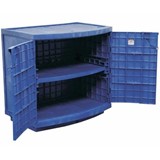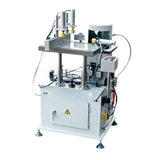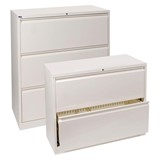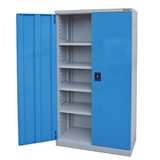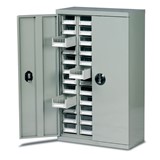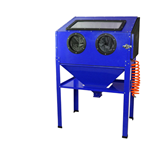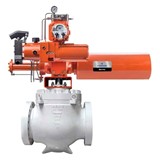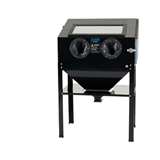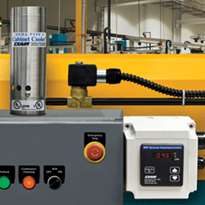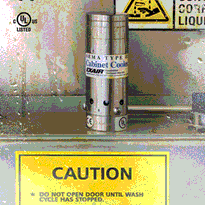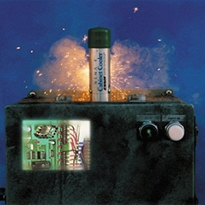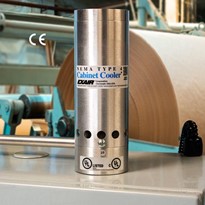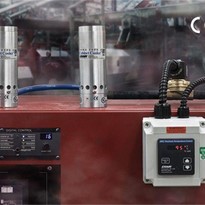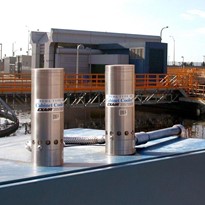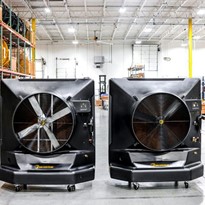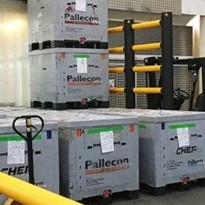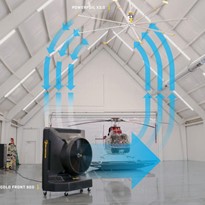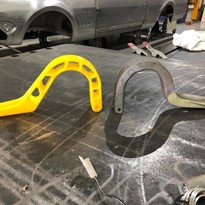The story is all too familiar. Your best customer places an important order for a custom-made product that is needed as soon as possible.
The company is even willing to pay rush charges to speed the delivery process. You give the company a firm delivery date and don't foresee any problem getting the job shipped out on time. The raw materials are there and the job is set up and running fine when suddenly, disaster strikes.
Halfway through the production run, the machine grinds to a screeching halt and refuses to budge. That's exactly what happened to Lasercraft Inc. of Fairfield, OH, manufacturers of precision laser-cut metal parts.
A summer time heat failure
Most of the country experienced scorching heat last summer where temperatures soared to record levels.
For Lasercraft, June brought the expected heat wave. The building was uncomfortably warm but production ran without a hitch. However, as the days pushed into mid-July, the temperatures continued to rise. The days combined with heat put out by their laser cutting machine took the temperature of the non-air-conditioned shop up over 100°F.
Soon, the heat took its toll on the electrical enclosures of the laser cutting machine. The computer produced a lot of error messages and stopped the operation.
Lasercraft tried numerous times to get the program to run with no success.
As it turned out, the main CNC circuit board failed and required shipment to Australia (the manufacturer's principle location) for repair.
The situation got worse. It took three days to get a temporary replacement computer cabinet. On top of that, the heat in its free-standing control cabinet was shutting the computer monitor off.
This "meltdown" left Lasercraft no choice but to move the job to their Cleveland location until the repairs could be made. The urgency to keep their good reputation and meet delivery times made finding the proper cooling product Lasercraft’s first priority.
Jeff Hauck, general manager of Lasercraft Corp, began to searching the internet for a solution.
"Of course, I wanted to come up with something that was permanent so this would never happen to us again," he said.
"Opening the panel doors wasn't an option due to safety concerns of having exposed electronics. Mounting panel fans made no sense because the temperature in the shop was too hot to provide cooling."
Other options were considered
After reading about heat exchangers, he concluded they would be too impractical since there was very little difference between the hot cabinet temperature and the outside surroundings.
He had also considered the Freon-type air-conditioners similar to those on other panels in the Lasercraft building.
Based on past experience, Hauck considered them "a constant maintenance project of their own", and as a result, decided against them based on their ongoing hassle of keeping the filters clean and the Freon charged.
Finally, he found EXAIR Corporation of Cincinnati, Ohio, who manufactures a Cabinet Cooler that met all their requirements.
EXAIR manufactures Cabinet Coolers that are compressed air powered. They incorporate a vortex tube to purge the enclosure with cold air.
"After finding EXAIR on the internet, I recalled seeing their Cabinet Cooler," Hauck said.
"Honestly, I had my doubts that something so small could deliver the cooling we needed, but was pleasantly surprised after installing it.
"Their staff calculated the cooling capacity and told me there was a 30 day no risk guarantee. I figured I had nothing to lose, so I ordered it and it arrived the next day."
While Lasercraft was waiting on their repaired computer board, they outfitted the cabinet for their laser cutter with the UL Listed Cabinet Cooler System.
Lasercraft also purchased a second NEMA 12 Cabinet Cooler System to mount on top of the monitor control panel. The Cabinet Cooler came complete with everything needed to get it up and running.
How the EXAIR Cabinet Cooler Works
Compressed air enters the vortex tube powered Cabinet Cooler and is converted into two streams, one hot and one cold. Hot air from the vortex tube is muffled and exhausted through the vortex tube exhaust. The cold air is discharged into the control cabinet through the cold air distribution kit. The displaced hot air in the cabinet rises and exhausts to atmosphere through the cabinet air exhaust at a slight positive pressure. Thus, the control cabinet is both cooled and purged with cool, clean air. Outside air is never allowed to enter the control panel.
There were numerous features that made EXAIR's Cabinet Cooler the best choice for Lasercraft. It was easy to install, compact in size, readily available, maintenance free, quiet, reliable and inexpensive. It took Lasercraft only a few minutes to install the Cabinet Cooler through a standard conduit knockout punch on top of their cabinet.
Since EXAIR's Cabinet Cooler has a built in relief on the unit, it wasn't necessary to add any additional holes in the enclosure to get the hot panel air out. The compact footprint of the 2000 Btu/hr Cabinet Cooler measuring only 1-3/8" in diameter by 8" tall, permitted mounting with minimal space.
A cold air distribution kit incorporating vinyl tubing with adhesive clips permitted routing of the cold air to those electronic components most susceptible to high temperature.






